Want to invest in Canadian Big Tech? The sector as a whole can be targeted through a tech ETF here in Canada.
Technology giants have done an excellent job of growing revenues and margins over the past several years.
Although investing entirely in one sector is never a good idea from a diversification perspective, using a tech sector ETF will allow you to control your position sizes in these key companies.
Let’s go over the best tech ETFs in Canada below and discuss some of their features.
Investment Characteristics of a Tech ETF
Since a tech ETF usually includes only tech stocks in its portfolio, the characteristics of a tech ETF should be mostly identical to those of most tech stocks.
Almost all tech stocks fall within the growth category, which is also one of the main drivers for investing in the sector. This makes most technology ETFs growth-oriented funds.
Some broad investment characteristics of tech ETFs include:
- A lower yield relative to other sectors (in the absence of a covered call strategy)
- A high expected growth rate of earnings and/or cash flows for underlying stocks
- Concentration in large capitalization stocks
- Expensive valuation multiples of underlying stocks (P/E, P/B, P/S, etc.)
- High volatility
Since technology ETFs generally invest in higher-risk, higher-reward tech companies, their risk rating tends to be higher than other sectors’ ETFs (or broader market ETFs).
Pros and Cons of Investing in Tech ETFs
Technology ETFs come with their distinct pros and cons when it comes to investing. Aside from letting investors diversify across different tech companies, we will discuss more sector-specific points below.
- Very strong long-term performance history
- Investing in some of the largest companies in the world (US tech)
- A sector with very high future growth prospects and margins
- The underlying tech stocks trade at high valuations
- Tech as a sector can experience high short-term volatility
- Technology ETFs usually pay a low yield (without a covered call strategy)
Over the long term in the US, the NASDAQ 100 has greatly outperformed the S&P 500. Keep in mind that the NASDAQ 100 is not a tech-exclusive index, and only roughly half of the index consists of companies within the tech sector.

Factors to Consider When Choosing a Tech ETF:
- Investment Goals: If your objective is long-term capital appreciation, you may lean towards growth-oriented tech ETFs. If you seek income, you might opt for ETFs with covered call strategies or dividend-focused tech stocks.
- Risk Tolerance: The tech sector is known for its volatility. If you have a low tolerance for market fluctuations, consider tech ETFs with a more conservative approach, such as those focused on established tech giants rather than emerging companies.
- Expense Ratios: Lower fees can significantly impact your overall returns. Compare MERs among different tech ETFs to choose a cost-effective option.
- Diversification: Some tech ETFs may concentrate heavily on a few tech sub-sectors, while others may offer broader exposure. Highly concentrated ETFs may require additional diversification within your portfolio to manage risk adequately.
- Yield vs. Growth: Some tech ETFs focus on capital growth, while others generate income through covered call strategies or dividends. Choose an ETF that aligns with your income needs and growth expectations.
- Performance History: While past performance doesn’t guarantee future results, it can provide insights into how the ETF has navigated different market conditions. Consider how the ETF performed during market downturns and upswings.
Best Tech ETFs in Canada
1. Invesco NASDAQ 100 Index ETF
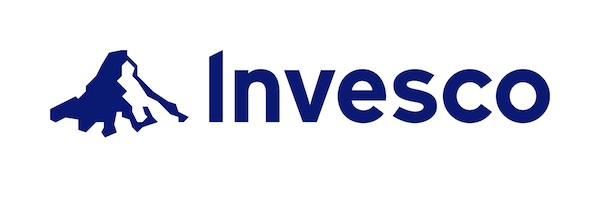
- Ticker: QQC.TO
- Hedged Ticker: QQC.F.TO
- Inception Date: May 10, 2021
- Assets under Management: $713.61 Million
- Management Expense Ratio: 0.20%
- Management Style: Passive
- Geographical Region: US
- Risk Rating: Medium
- Distributions: Quarterly
- Distribution Yield: 0.54%
- Stock Price: $28.43
- YTD Return: 33.58%
Invesco offers Canadian investors inexpensive access to one of the top US indices, the NASDAQ 100. QQC passively tracks this index here in Canada.
The ETF, like the index, is composed of the 100 largest companies on the NASDAQ exchange. While it is not a technology-specific index (it only excludes non-financial securities), it has a heavy tech weight because tech companies tend to be very large and listed on the NASDAQ.
With 100 different stock holdings, the ETF is well diversified in terms of its number of holdings but is still concentrated only within the US.
QQC is available to Canadian investors in an unhedged series (QQC.TO) as well as a currency-hedged series (QQC.F.TO). Due to the impact of currency fluctuations between the US dollar and Canadian dollar over the past several years, the unhedged version has outperformed.
The ETF is very large in terms of assets under management and is offered at a very inexpensive MER relative to other tech sector ETFs available to Canadians. The unhedged version of the ETF has a significantly shorter performance track record than the hedged version.
QQC is rated as a medium-risk fund, which is similar to other technology funds in the industry. In our opinion, the technology sector as a whole can be very volatile, putting a tech ETF’s true risk rating closer to high risk.
If you are looking to invest in the US technology sector, the QQC ETF is an excellent and inexpensive choice.
2. BMO NASDAQ 100 Equity Index ETF

- Ticker: ZNQ.TO
- Inception Date: February 15, 2019
- Assets under Management: $210.2 Million
- Management Expense Ratio: 0.38%
- Management Style: Passive
- Geographical Region: US
- Risk Rating: Medium
- Distributions: Annually
- Distribution Yield: 0.35%
- Stock Price: $77.1
- YTD Return: 3.35%
BMO also has a NASDAQ 100 ETF that it provides on the Canadian ETF shelf. ZNQ is a plain vanilla strategy that simply passively invests in the stocks contained within the NASDAQ 100 index.
The NASDAQ 100 is not a tech-exclusive index but tends to hold a lot of large tech companies because of their characteristics.
With approximately 100 holdings, ZNQ is well diversified within the US tech equity parameter. A well-built portfolio, however, will be invested outside of the US and will have exposure to multiple sectors as well.
ZNQ has a very short-term performance track record and trades at almost twice the MER that Invesco offers its NASDAQ 100 ETF for. This makes it expensive for a virtually identical product, with the main difference being BMO’s branding.
The fund is a large ETF in terms of assets under management.
BMO rates its fund as having a medium level of risk. This is a good assessment of risk for a lot of equity funds, but a tech-heavy index like the NASDAQ 100 should likely be considered above medium risk.
Although ZNQ is a good ETF structurally and a sound investment, it is difficult to recommend it over Invesco’s QQC ETF, which is offered at almost half of the cost.
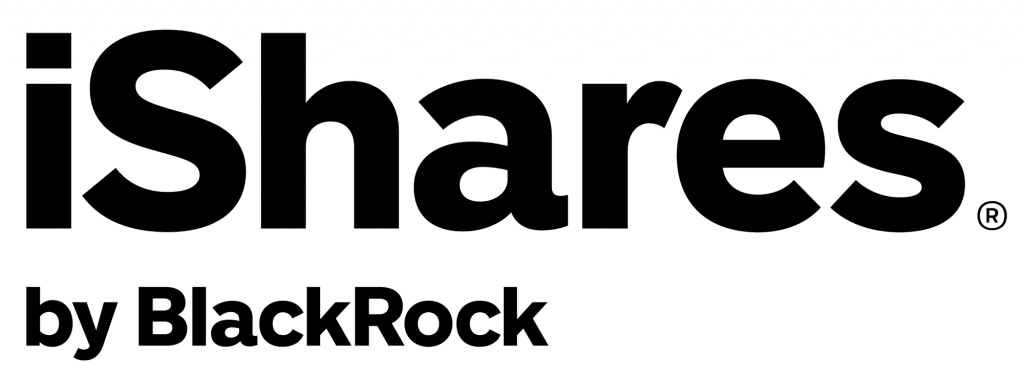
- Ticker: XIT.TO
- Inception Date: March 19, 2001
- Assets under Management: $578.83 Million
- Management Expense Ratio: 0.61%
- Management Style: Passive
- Geographical Region: Canada
- Risk Rating: Medium-to-High
- Distributions: Semi-Annually
- Distribution Yield: 0.00%
- Stock Price: $53.37
- YTD Return: 6.27%
XIT, offered by Blackrock’s iShares here in Canada, focuses on the Canadian technology sector. The technology sector here at home is many times smaller than the one in the US.
The ETF passively tracks the S&P/TSX Capped Information Technology Index. XIT does concentrate investors entirely within Canadian stocks. With fewer than 30 stocks within the portfolio, XIT is a highly concentrated strategy from a stock perspective.
iShares’ XIT ETF has a very long performance track record and is a large ETF in terms of assets under management. From a fee perspective, the ETF’s fees are relatively high when compared to peers.
XIT’s risk rating is medium to high, which is likely a good approximation of the fund’s underlying volatility. Technology stocks tend to be more volatile than equities in most other sectors (with those usually being rated medium risk).
Despite paying distributions semi-annually, XIT has a very irregular historical distribution schedule. From an income perspective, a low yield should be expected when investing in technology equities.
If you are looking to invest solely in technology stocks here in Canada, XIT is your best option for targeting this sector.

- Hedged Ticker: XQQ.TO
- Inception Date: May 3, 2011
- Assets under Management: $2.1 Billion
- Management Expense Ratio: 0.39%
- Management Style: Passive
- Geographical Region: US
- Risk Rating: Medium-to-High
- Distributions: Semi-Annually
- Distribution Yield: 0.35%
- Stock Price: $133.73
- YTD Return: 1.83%
Blackrock’s iShares also offers a NASDAQ 100 ETF in Canada on a currency-hedged basis. XQQ invests in the same stocks as those found in the NASDAQ 100 index while also eliminating any currency effects from fluctuations between the Canadian and US dollar.
Historically speaking, hedging out the currency impact between the US and Canadian dollars would have reduced long-term returns for Canadians.
As mentioned before, the NASDAQ 100 index does not specifically target tech companies – it includes the largest 100 stock names by market capitalization listed on the NASDAQ exchange.
100 different stock holdings are enough to properly diversify a portfolio. On top of this, it’s important to consider sector concentration and geographical concentration.
XQQ comes with a long performance track record and also trades at almost twice the MER that Invesco offers its NASDAQ 100 ETF for. Since Invesco also offers a hedged version of their QQC ETF, XQQ comes in as a more expensive substitute.
The XQQ ETF is a massive fund in terms of assets under management.
iShares rates its NASDAQ 100 ETF as having a medium-to-high. This is a good assessment of risk as the index has a very high weighting to tech stocks, which can become very volatile.
Similar to BMO’s NASDAQ ETF, iShares has a robust offer in this space but has a difficult time competing with Invesco’s NASDAQ 100 ETF, which is offered at almost half of the fees.
5. TD Global Technology Leaders Index ETF

- Ticker: TEC.TO
- US Dollar Ticker: TEC.U.TO
- Inception Date: May 7, 2019
- Assets under Management: $1.25 Billion
- Management Expense Ratio: 0.39%
- Management Style: Passive
- Geographical Region: Global
- Risk Rating: Medium
- Distributions: Quarterly
- Distribution Yield: 0.21%
- Stock Price: $34.48
- YTD Return: 4.11%
TD offers a great technology ETF in Canada, focused on mid-cap and large-cap companies globally. This allows investors to obtain additional geographical diversification than they would from investing in an ETF tracking a US or Canadian index.
TEC is passively managed and tracks the Solactive Global Technology Leaders Index. While it is positioned as a technology leader’s ETF, only about 70% of the fund is actually invested within the technology sector.
From a geographical allocation perspective, the ETF has a high allocation to US companies, with almost 86% of the fund invested in US stocks. The allocation to Canadian stocks is less than 1%.
With approximately 270 equity holdings, the ETF is well diversified across stocks. The fund does have high current weights toward Apple, Microsoft, and Amazon.
TEC has a short performance track record and is a massive ETF in terms of assets under management. Considering that it is a global ETF, it comes at a decent MER.
TD has assigned TEC a medium risk rating. This is likely slightly understated, as technology stocks should be rated at least medium-to-high risk due to their high potential volatility.
As a slightly better-diversified fund than just a pure Canadian or US tech fund, TD’s TEC ETF is a great global tech fund to consider for your portfolio.
6. CI Tech Giants Covered Call ETF
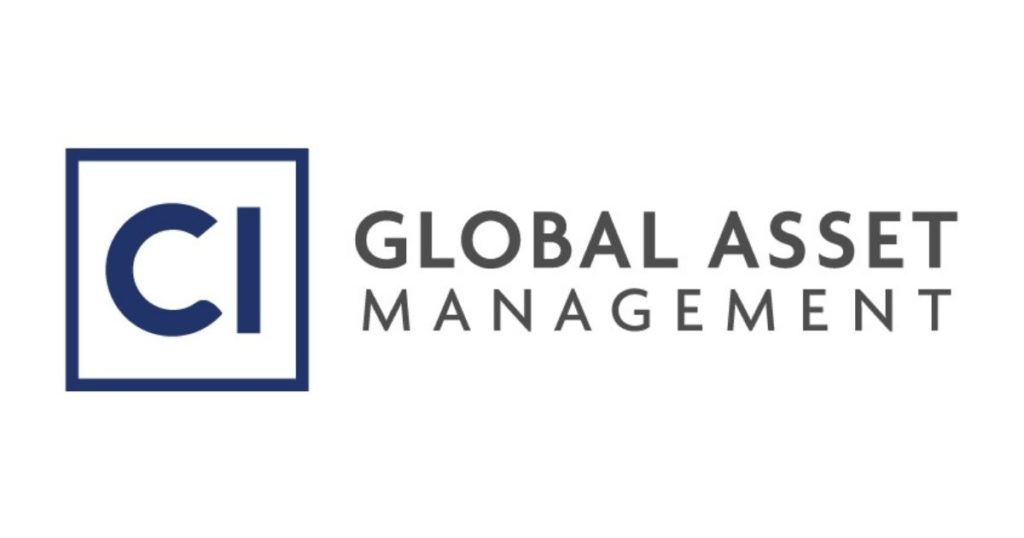
- Ticker: TXF-B.TO
- Hedged Ticker: TXF.TO
- US Dollar Ticker: TXF.U.TO
- Inception Date: August 29, 2017
- Assets under Management: $622.8 Million
- Management Expense Ratio: 0.70%
- Management Style: Active
- Geographical Region: US
- Risk Rating: Medium
- Distributions: Quarterly
- Distribution Yield: 9.08%
- Stock Price: $25.15
- YTD Return: 5.13%
If you are looking to invest in a tech ETF that pays a high-income stream, this is possible through the addition of a covered call strategy.
CI Global Asset Management offers such a strategy through their TXF ETF. The fund invests in large-cap US stocks while also using a covered call strategy to generate a very high yield for investors. The strategy is actively managed by the portfolio managers from CI Global Asset Management.
The fund aims to have an equal weight approach to investing in at least 25 of the largest US companies based on market capitalization. Although the equal-weighting does help to reduce the fund’s concentration to some extent, 25 holdings are still inadequate from a diversification perspective.
CI has a very diverse series offering when it comes to their Tech Giants Covered Call ETF. A currency hedged, and unhedged version is available for purchase with Canadian dollars. CI also offers the fund in US dollars, allowing investors to purchase it on the US side of their accounts.
TXF comes with a relatively higher MER than most tech ETFs on our list.
The ETF comes with a medium-length performance track record and is a very large fund in terms of assets under management. The fund’s medium risk rating is likely appropriate, as the covered call strategy helps to slightly reduce downside risk.
If you are looking to invest in US tech and also access a source of high income, CI’s TXF ETF is one of the best options to consider.
7. Brompton Tech Leaders Income ETF

- Hedged Ticker: TLF.TO
- US Dollar Ticker: TLF.U.TO
- Inception Date: May 20, 2011
- Assets under Management: $85.53 Million
- Management Expense Ratio: 0.97%
- Management Style: Active
- Geographical Region: North American
- Risk Rating: Medium
- Distributions: Monthly
- Distribution Yield: 6.02%
- Stock Price: $23.16
- YTD Return: 4.17%
Brompton also offers a tech ETF in Canada that is focused on high monthly income through a covered call strategy.
The yield offered by Brompton’s strategy is significantly lower than that offered by CI’s covered call tech fund. Despite being significantly lower, TLF still pays a very high yield to investors on a monthly basis.
The fund is actively managed and invests in just over 20 North American-listed tech companies. This makes it an extremely concentrated strategy that will likely need to be complemented by several other ETFs or diversifying investments.
TLF is offered in a hedged version on the Canadian dollar side as well as in a US dollar version. TLF comes with a fairly high MER and is more expensive than most of the funds on our list.
TLF comes with a long performance track record and is fairly small in assets. Brompton has assigned a medium risk rating to the fund, which is likely appropriate considering that covered call strategies can help to reduce downside volatility.
If you are looking to invest in tech and generate income, Brompton’s ETF is a good option to consider, despite being significantly more expensive than CI’s similar strategy.
8. Harvest Tech Achievers Growth & Income ETF

- Ticker: HTA-B.TO
- Hedged Ticker: HTA.TO
- US Dollar Ticker: HTA.U.TO
- Inception Date: April 27, 2015 (Hedged)
- Assets under Management: $288.0 Million
- Management Expense Ratio: 0.99%
- Management Style: Active
- Geographical Region: US
- Risk Rating: Medium
- Distributions: Monthly
- Distribution Yield: 8.19%
- Stock Price: $17.92
- YTD Return: 6%
Offering Canadians a similar strategy to CI’s Tech Giants ETF, Harvest also has a US tech-covered call ETF on the Canadian ETF shelf. HTA equally invests in 20 large-cap technology stocks in the US and applies a covered call strategy to generate a very high income for investors.
Since HTA uses a covered call strategy, it would be considered an actively managed ETF. Since the fund only invests in 20 stocks, it is highly concentrated.
Harvest offers its HTA ETF through a hedged and unhedged Canadian dollar series as well as a US dollar series.
HTA pays a very high yield to investors on a monthly basis, generated by its covered call writing. The ETF comes with a very high MER, especially relative to some peers on our list.
The hedged version of the fund has a fairly long performance track record, and HTA is a large ETF by assets under management overall. Its medium risk rating is appropriate because the covered call strategy helps to reduce overall volatility.
If you are looking for a concentrated tech mandate with a high-income stream, HTA is a good ETF to consider, despite being relatively expensive.
9. First Trust AlphaDEX US Technology Sector Index ETF

- Ticker: FHQ.TO
- Hedged Ticker: FHQ.F.TO
- Inception Date: October 29, 2014
- Assets under Management: $29.14 Million
- Management Expense Ratio: 0.77%
- Management Style: Passive
- Geographical Region: US
- Risk Rating: Medium to High
- Distributions: Quarterly
- Distribution Yield: 0.00%
- Stock Price: $86.61
- YTD Return: 3.3%
First Trust offers an interesting technology ETF based on a wider universe to investors here in Canada. The strategy invests in US tech stocks that are contained within the Russell 1000 index. FHQ is passively managed to replicate the performance of the StrataQuant Technology Index.
With over 100 individual stock holdings all in the US tech sector, First Trust offers a well-diversified US tech ETF. The stocks within the ETF are a mixture of both large-cap stocks as well as mid-cap stocks.
FHQ is offered at an above-average MER when compared to other tech ETFs on our list.
The ETF has a fairly long performance track record and is fairly small in terms of assets under management. First Trust rates the ETF as a medium-to-high risk investment, which is in line with most tech equities.
FHQ pays an excellent yield to investors on a quarterly basis, much higher than most other technology funds (especially those not using a covered call strategy). This is likely because the ETF also focuses on mid-cap technology names.
As a well-diversified, high-yielding, US-focused technology ETF available to Canadians, FHQ is a great choice to consider.
10. TD Global Technology Innovators Index ETF

- Hedged Ticker: TECI.TO
- Inception Date: October 28, 2021
- Assets under Management: $4.67 Million
- Management Expense Ratio: 0.00%
- Management Style: Passive
- Geographical Region: Global
- Risk Rating: Medium
- Distributions: Quarterly
- Distribution Yield: 0.64%
- Stock Price: $7.74
- YTD Return: 4%
TD has also recently launched a global technology innovators ETF, with a focus on companies around the world that:
- Have high annual revenue growth rates
- Have a higher return on invested capital
- Grow their operating margin
TECI also aims to exclude mega-cap tech names that typically dominate traditional indices. It is a passive ETF that tracks the Solactive Global Technology Innovators Index.
The ETF is roughly 70% invested in the technology sector with approximately a 60% allocation to the US. TECI has roughly 110 underlying stock holdings and also invests in the European Union, Japan, Latin America, and Canada.
TECI is offered at a fairly average MER relative to its peers. The ETF has a very short performance track record, with a very recent inception date. It is a tiny ETF in terms of assets, putting the strategy at risk of closing down in the future if it’s unable to attract additional capital.
TD rates the fund as being medium risk, which likely understates the volatility of the ETF. A more realistic risk rating would be medium-to-high, similar to some of the funds on our list.
TECI pays distributions to investors on a quarterly basis and offers a very low yield.
As the smallest ETF on our list by far, it is difficult to recommend investing in TD’s TECI ETF over other tech ETFs listed above. If the strategy is able to attract additional assets in the future, it may become a great choice to consider.
Should you Invest in a Tech ETF?
Since technology stocks (and therefore ETFs) have specific characteristics, they are more appropriate for specific types of investors.
Tech ETFs would likely not make sense for the following investors:
- Investors with a low-risk profile
- Individuals with a short investment time horizon
- Investors looking for a good income stream from their investments
Technology ETFs would be attractive to:
- Aggressive investors with a high-risk tolerance
- Individuals investing for the long term
- Investors that prefer growth investing instead of value investing
The growth of the number of full-time employees, especially at tech behemoths such as Apple, Alphabet, and Microsoft, has been impressive over the past decade:

But before rushing to invest in tech ETFs (or any investment for that matter), make sure to properly assess your situation and goals to find out which investments are appropriate for you.
Risks of Investing in Tech ETFs:
- Sector-Specific Risks: The technology sector faces unique risks, including regulatory changes, intense competition, and rapid technological advancements. Disruptions in emerging technologies or regulatory actions can impact the performance of tech stocks and, consequently, tech ETFs.
- Concentration Risk: Some tech ETFs may be heavily concentrated in a few large-cap companies. If these companies encounter challenges or experience significant price declines, it can have a disproportionate impact on the ETF’s performance.
- Interest Rate Risk: Tech stocks, especially growth-oriented ones, can be sensitive to changes in interest rates. Rising interest rates can lead to lower valuations for growth stocks, potentially affecting the performance of tech ETFs.
- Lack of Diversification: Investing exclusively in tech ETFs can result in an undiversified portfolio. Diversification across different sectors and asset classes can help reduce risk and minimize the impact of sector-specific downturns.
Strategies for Adding Tech ETFs to your Portfolio
Technology, while extremely attractive from a long-term return perspective, should be carefully considered when putting together a portfolio.
Technology ETFs fall within the equity portion of your investment portfolio. While these ETFs are sector-specific, they can differ in geography (US tech, Global tech, etc.). A well-constructed portfolio will be diversified across different sectors as well as different geographies.
Within this context, the allocation to technology as a sector will depend entirely on your risk tolerance as an investor.
Investors with a low-risk tolerance should not be investing in tech ETFs (or any equities for that matter).
Investors with a high-risk tolerance could have a substantial allocation to technology as a sector, especially if the allocation is diversified globally (through multiple ETFs).
What is the best Canadian Technology ETF?
The best Canadian technology ETF depends on what you are looking for.
If you are looking to invest in Canadian tech stocks, one of your only options is the iShares S&P/TSX Capped Information Tech Index ETF.
If you are looking to invest in tech stocks in general through a Canadian dollar ETF, one of the best options is the Invesco NASDAQ 100 index ETF (QQC).
What is the Best Performing Tech ETF?
Funds to consider as top long-term (10-year returns) performers vary whether you are looking for a Canadian dollar fund or a US dollar fund.
As a US dollar tech ETF, Direxion Daily Technology Bull 3X Shares has one of the strongest 10-year return figures.
As a Canadian dollar tech ETF, Invesco’s NASDAQ 100 index ETF has one of the top 10-year returns.
How to Buy the Best Tech ETFs in Canada
The cheapest way to buy ETFs is from discount brokers. My top choices in Canada are:
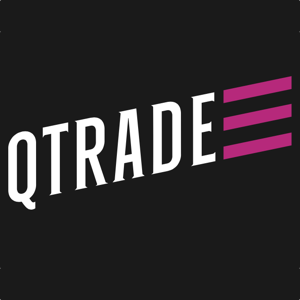
- 105 commission-free ETFs to buy and sell
- Excellent customer service
- Top-notch market research tools
- Easy-to-use and stable platform

- Stock and ETF buys and sells have $0 trading fees
- Desktop and mobile trading
- Reputable fintech company
- Fractional shares available
To learn more, check out my full breakdown of the best trading platforms in Canada.
Conclusion
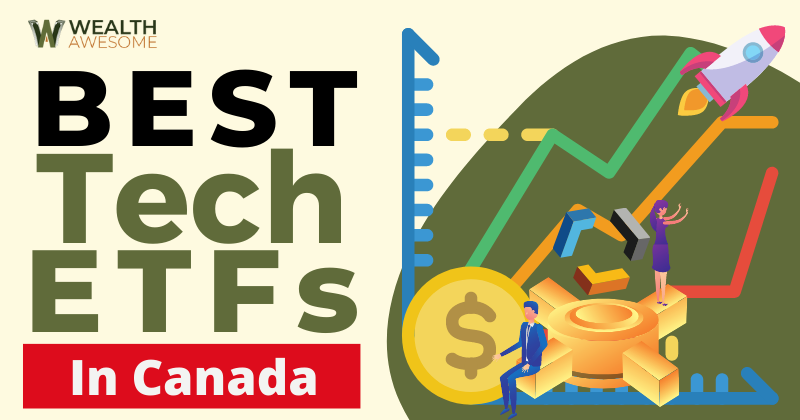
For an investor with a long-term investment time horizon and high-risk tolerance, a tech sector ETF can be an excellent addition to the portfolio. If you’re unsure of what type of ETF to buy, check out this list of the best ETFs in Canada.
Remember that a well-built portfolio diversifies not only across sectors but also across different geographical regions.
Before purchasing any fund, make sure that you’ve considered the different ways to purchase an ETF here in Canada.






Makes sense, thanks for the response. I’ll likely be investing in it, since the price point is considerably lower than ZQQ.
And great blog you have here. Feels like a hidden trove of financial/life gems!
Great article, Chris. Will have to consider one of the Blackrock ETFs
Btw, what are your thoughts on TEC.TO as a long term hold?
Hey Brendan, I like TEC.TO, it’s going to be pretty similar in performance and MER’s to the BMO ZQQ one on this list with the main focus on US equities. It’s a bit newer, which is why I didn’t include it on the list, but one that’s definitely worth keeping an eye on.